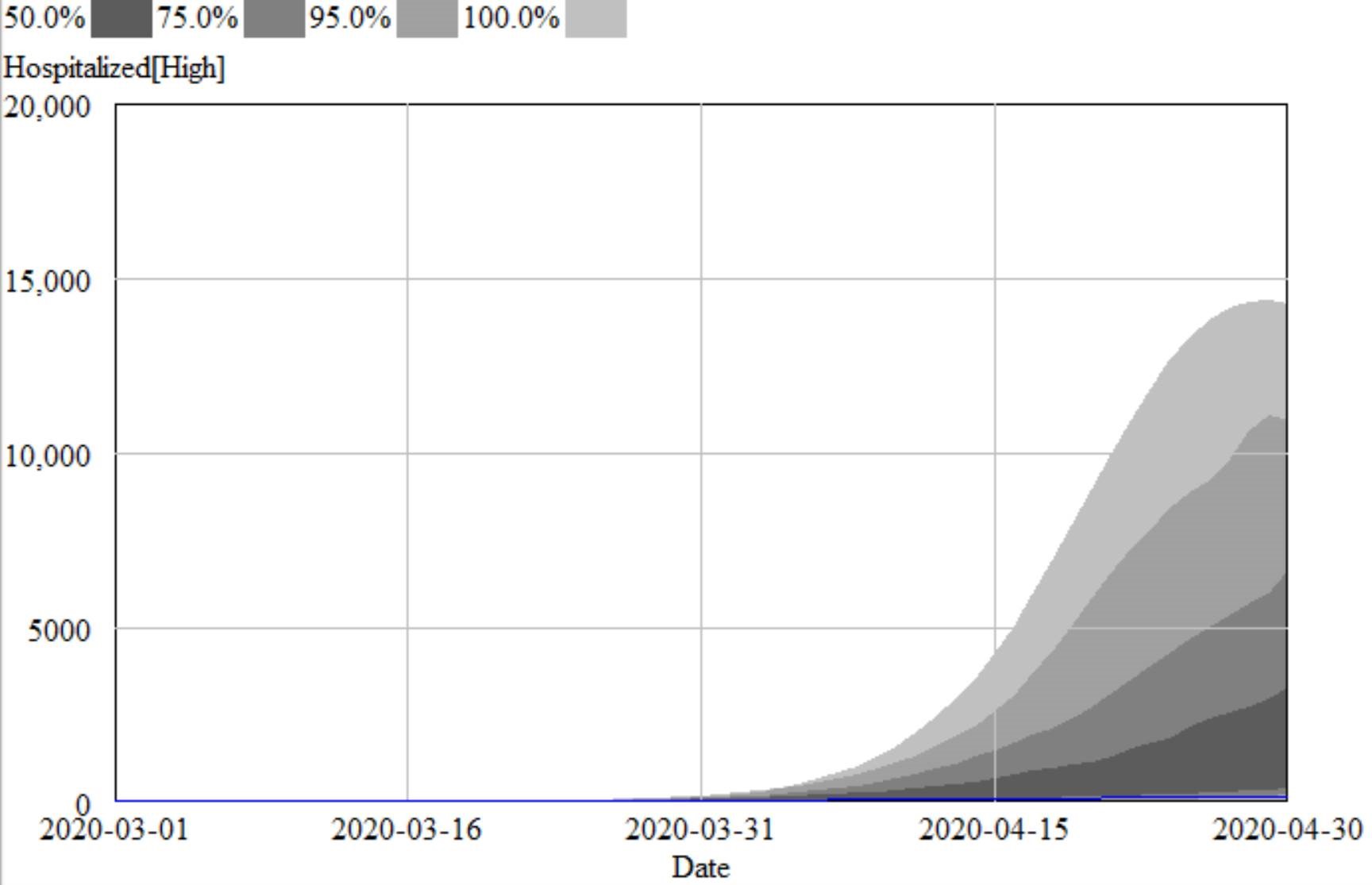The following is a note I posted to a local listserv earlier in the week. It’s an example of back-of-the-envelope reasoning informed by experience with models, but without actually calibrating a model to verify the results. Often that turns out badly. I’m posting this to archive it for review and discussion later, after new data becomes available (as early as tomorrow, I expect).
I thought about responding to this thread two weeks ago, but at the time numbers were still very low, and data was scarce. However, as an MSU parent, I’ve been watching the reports closely. Now the picture is quite different.
If you haven’t discovered it, Gallatin County publishes MSU stats at the end of the weekly Surveillance Report, found here:
https://www.healthygallatin.org/about-us/press-releases/
For the weeks ending 9/10, 9/17, 9/24, and 10/2, MSU had 3, 7, 66, and 43 new cases. Reported active cases are slightly lower, which indicates that the active case duration is less than a week. That’s inconsistent with the two-week quarantine period normally recommended. It’s hard to see how this could happen, unless quarantine compliance is low or delays cause much of the infectious period to be missed (not good either way).
The huge jump two weeks ago is a concern. That’s growth of 32% per day, faster than the typical uncontrolled increase in the early days of the epidemic. That could happen from a superspreader event, but more likely reflects insufficient testing to detect a latent outbreak.
Unfortunately they still don’t publish the number of tests done at MSU, so it’s hard to interpret any of the data. We know the upper bound, which is the 2000 or so tests per week reported for all of Gallatin county. Even if all of those were dedicated to MSU, it still wouldn’t be enough to put a serious dent in infection through testing, tracing and isolation. Contrast this with Colby College, which tests everyone twice a week, which is a test density about 100x greater than Gallatin County+MSU.
In spite of the uncertainty, I think it’s wrong to pin Gallatin County’s increase in cases on MSU. First, COVID prevalence among incoming students was unlikely to be much higher than in the general population. Second, Gallatin County is much larger than MSU, and students interact largely among themselves, so it would be hard for them to infect the broad population. Third, the county has its own reasons for an increase, like reopening schools. Depending on when you start the clock, MSU cases are 18 to 28% of the county total, which is at worst 50% above per capita parity. Recently, there is one feature of concern – the age structure of cases (bottom of page 3 of the surveillance report). This shows that the current acceleration is driven by the 10-19 and 20-29 age groups.
As a wild guess, reported cases might understate the truth by a factor of 10. That would mean 420 active cases at MSU when you account for undetected asymptomatics and presymptomatic untested contacts. That’s out of a student/faculty population of 20,000, so it’s roughly 2% prevalence. A class of 10 would have a 1/5 chance of a positive student, and for 20 it would be 1/3. But those #s could easily be off by a factor of 2 or more.
Just extrapolating the growth rate (33%/week for cumulative cases), this Friday’s report would be for 61 new cases, 207 cumulative. If you keep going to finals, the cumulative would grow 10x – which basically means everyone gets it at some point, which won’t happen. I don’t know what quarantine capacity is, but suppose that MSU can handle a 300-case week (that’s where things fell apart at UNC). If so, the limit is reached in less than 5 weeks, just short of finals.
I’d say these numbers are discouraging. As a parent, I’m not yet concerned enough to pull my kids out, but they’re nonresidential so their exposure is low. Around classrooms on campus, compliance with masks, sanitizing and distancing is very good – certainly better than it is in town. My primary concern at present is that we don’t know what’s going on, because the published statistics are insufficient to make reliable judgments. Worse, I suspect that no one knows what’s going on, because there simply isn’t enough testing to tell. Tests are pretty cheap now, and the disruption from a surprise outbreak is enormous, so that seems penny wise and pound foolish. The next few weeks will reveal whether we are seeing random variation or the beginning of a large outbreak, but it would be far better to have enough surveillance and data transparency to know now.





 Like Young Frankenstein, epidemic curves are not Normal.
Like Young Frankenstein, epidemic curves are not Normal.




